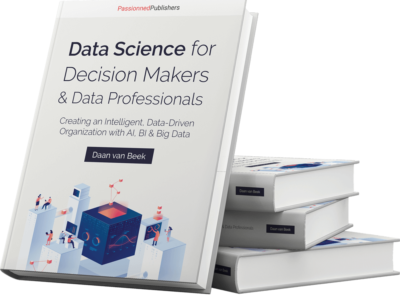Generative AI creates neat imitations of examples
Generative AI is the field that generates customized content completely independently, based on artificial intelligence techniques such as neural networks. It mimics examples and generates an imitation. Think texts, images, sounds, or video. The most well-known example of generative AI is ChatGPT from the company OpenAI. OpenAI’s system (ChatGPT + DALL-E) has “drained” the entire Internet, analyzed all the words, punctuation, phrases, images, videos, and associated context, and learned from these to the point where it can write texts or program code or create illustrations on its own. Generative refers to the ability this type of artificial intelligence has to generate, bring forth, or produce something independently. Generative AI is going to have a big impact on our work.
What is Generative AI?
Generative AI uses both unsupervised and semi-supervised machine learning techniques. So it is not something totally new but it uses a combination of multiple types of algorithms. It allows computers to create new content based on existing content, such as text, audio, video, images, and code.
Generative AI is the field that, based on machine learning techniques such as neural networks, generates unique content completely independently based on lots of examples and a question (prompt) from a user.
The goal is to generate – based on a question from a user, or a command from a system – completely original artifacts that are indistinguishable from the real thing. Generative AI makes imitations of the originals, it is a good copycat.
AI models for Generative AI
Two common generative AI models are Generative Adversarial Networks (GANs) and transformer-based models, such as Generative Pre-Trained (GPT) language models.
Now you know the main two types of generative AI models. Many companies are currently engaged in developing these types of models and making them public, through APIs or otherwise. Examples include PaLM, Bard, GPT-4, Sparrow, and LaMDA.
Applications of Generative AI
Generative AI has applications in various domains, such as:
- image generation
- image-to-image translation
- text-to-image translation
- text-to-speech
- audio generation
- video-generation
- image and video enhancement
- synthetic data generation
While generative AI has great potential and can produce impressive results, it also brings major challenges, such as the emergence of deepfakes, copyright, fear of job loss, and the difficulties of checking generated output (for accuracy or authenticity).
The Artificial Intelligence handbook Want to learn more about Artificial Intelligence, machine learning, and BI? This Artificial Intelligence book can be of great help in understanding this technology and how to effectively deploy it in your organization. Today's trend may become tomorrow's standard.
Want to learn more about Artificial Intelligence, machine learning, and BI? This Artificial Intelligence book can be of great help in understanding this technology and how to effectively deploy it in your organization. Today's trend may become tomorrow's standard.
The impact of generative AI on occupations and industries
Generative AI makes it possible for the intelligent, data-driven organization to not only make decisions automatically but also to respond automatically. With that, we can take artificial intelligence all the way to the end of the cycle. This is another indication that AI is a systems technology and not just a toy made by tech companies. Many people’s lives and work will change dramatically in the coming years. Researchers predict, for example, that generative AI in particular can achieve annual productivity increases between 1% and 3%. So that’s cumulative, year on year. It’s a challenge for all of us to find a way around that, writers, musicians, actors, and other creative and educational professions included.
Generative AI is going to play a very important role in any field that involves a creative (generative) process. Consider professions such as:
- Policy officers and managers
- Consultants and (financial) advisors
- Marketers and advertisers
- Sales and account managers
- Writers, teachers, musicians, filmmakers, screenwriters, and actors
- Lawyers, brokers, and notaries
- SEO specialists and web editors
- IT architects, programmers, and administrators
- Accountants and auditors
- Data engineers & data analysts
- Etc
The list can be made as long as you like. After all, creative processes occur in every profession and industry. Generative AI’s transformative impact on industries can, however, reveal a gap between expectations and actual benefits. Read our blog about the challenges of aligning AI promises with reality.
Would you also like to know the impact of generative AI on your organization or business? Then contact the generative AI specialists.
More information about Generative AI?
Would you like more information or a casual chat about the applications of generative AI? Then leave your contact details here.
About Passionned Group
 Passionned Group is a leading specialist in conceiving and creating innovative artificial intelligence solutions including generative AI. Our skilled consultants help you to turn your organization into a data-driven company where AI-first can become the rule. Every other year we organize the Dutch BI & Data Science Award™.
Passionned Group is a leading specialist in conceiving and creating innovative artificial intelligence solutions including generative AI. Our skilled consultants help you to turn your organization into a data-driven company where AI-first can become the rule. Every other year we organize the Dutch BI & Data Science Award™.
Frequently Asked Questions
What is generative AI?
An AI technology that can create imitations that are barely distinguishable from the examples it learned from.
What are Large Language Models?
These are so-called Generative Pre-Trained language models that have an astronomical number of parameters that enable them to recognize and generate multi-level sequences.
Is Generative AI a threat?
Certainly. Every creative process and industry is going to suffer greatly from it. But, of course, generative AI also offers opportunities if you can deploy it effectively in your organization.
Are the results of generative AI always reliable?
No, this form of AI offers “only” an approximation (like all AI) but in many cases it is sufficient. You will always need to check the results (regularly) by an expert. By further specifying your prompts, you can get better results generated.


